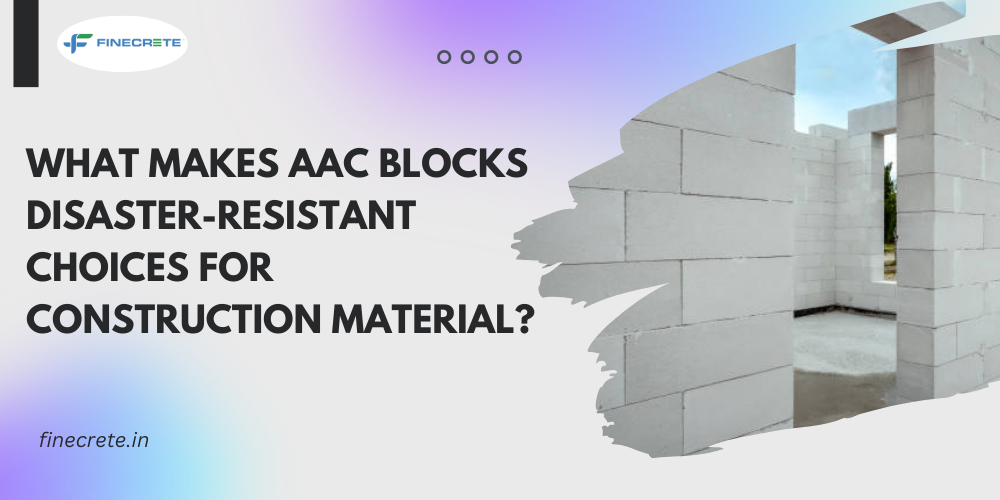When it comes to construction materials, Autoclaved Aerated Concrete (AAC) blocks have emerged as a top pick, particularly in regions prone to natural disasters. These lightweight yet robust building blocks have a myriad of advantages that make them an ideal choice for disaster-resistant construction.
Disaster-Resistant AAC Blocks: What Makes Them So?
Here are some of the key reasons why AAC blocks stand out as a resilient and reliable option for builders in disaster-prone areas.
- Lightweight Nature:
Lightweight composition is one of the standout features of AAC blocks. Unlike traditional concrete blocks, these blocks are manufactured using a combination of cement, lime, fly ash, and an aerating agent. This results in a porous structure that is 80% air, making these blocks significantly lighter than their conventional counterparts. The lightweight nature of AAC blocks not only simplifies the construction process but also enhances the seismic resistance of structures.
In earthquake-prone regions, the ability of a building to absorb and dissipate seismic forces is crucial. Due to lightweight composition, Autoclaved Aerated Concrete blocks minimize the overall mass of the structure, reducing the impact of seismic waves and enhancing the building’s ability to withstand earthquakes.
- Excellent Thermal Insulation:
AAC blocks boast of exceptional thermal insulation properties, providing a comfortable living environment while contributing to energy efficiency. These blocks have a porous structure, having air pockets within the material, resulting in a low thermal conductivity. This characteristic helps regulate indoor temperatures, reducing the need for extensive heating or cooling systems.
In disaster scenarios such as fires, the excellent thermal insulation of Autoclaved Aerated Concrete blocks becomes a crucial factor. These blocks resist high temperatures, delaying the spread of fire and allowing for more time for evacuation or intervention. The fire-resistant nature of these blocks makes them more suitable for disaster-prone areas, where the rapid spread of fire can be a significant threat.
- High Compressive Strength:
AAC blocks exhibit impressive compressive strength, making them capable of withstanding substantial loads. This attribute is particularly important in regions susceptible to cyclones, hurricanes, or heavy rainfall. The high compressive strength of these blocks ensures that structures can endure external pressures, minimizing the risk of collapse during extreme weather events.
In flood-prone areas, Autoclaved Aerated Concrete blocks maintain their structural integrity even when submerged in water for extended periods. Traditional construction materials may weaken or degrade when exposed to moisture, but these blocks remain resilient, making them a reliable choice for buildings in areas prone to flooding.
- Resistance to Mold and Pests:
Natural disasters often bring secondary challenges such as higher level of humidity and the proliferation of mold and pests. AAC blocks, being inorganic and moisture-resistant, provide an inhospitable environment for mold and pests to thrive. This resistance contributes to the longevity of structures and ensures that the building remains a safe and healthy space even after a disaster.
Beyond their disaster-resistant qualities, AAC blocks are also celebrated for their eco-friendly attributes. The manufacturing process produces minimal waste and the use of fly ash as a raw material reduces the demand for traditional cement, a resource-intensive component in conventional concrete.






